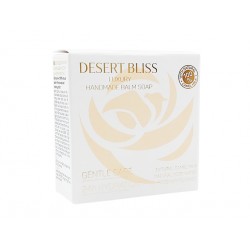Camel milk is not only tasty but also recommended for allergy and diabetes, as well as for cancer and seropositive (HIV / AIDS). It is also used in the cosmetics industry.
Is this not just the next product that is being intruded by the food and wellness industry, is the consumer asking?
Since 2013, camel milk is known on the European market and is called "white gold from the desert". The products are available in a variety of forms.
For the inhabitants of the desert, camel's milk has almost been a "panacea" for more than 3,000 years. They do not miss talking about its many healing properties.
Although not all the useful ingredients of camel milk are known, both the pharmaceutical and the cosmetics industry and, above all, the food industry sees many opportunities for its supply, but anyway new research proves and will prove the benefits of it.
In response to the worldwide demand for camel milk, the creation of new camel farms in the different parts of the Arabian Peninsula is becoming a separate industry. There are already huge farms, but camel growing and milk production is not easy.
Camels, like cows, have 4 udders and can theoretically be milking twice a day. Automatic milking machines have already been created for the camels. But it should be kept in mind that camels are much more cowardly than cows, if the camel feels not good, it stops giving milk.
One camel gives an average of 7 liters of milk per day. This also explains why camel's milk and other products are considerably more expensive.
Camel milk is believed to be better tolerated by people with allergies. Camel milk has a high nutritional value. It contains 5 times more vitamin C than cow, almost no sugars, and is 50 percent less fat. Vitamin B, as well as calcium and the mineral content of it is higher than in cow's milk.
Two milk proteins that can provoke allergies: beta-lactoglobulin and beta-casein are not present in camel's milk. Perhaps, for people with lactose intolerance, it will be better absorbed.
At the same time, camel milk contains allergens (like any milk) that, like caseins, can trigger reactions in people who are allergic to cows' milk. Studies have shown, however, that these allergic reactions are less common than goat's milk as a substitute for people who suffer from milk allergies.
Cosmetics also assesses camel milk. Companies process "white gold from the desert" and include it in body care products.
Experts again interfere here Cleopatra. She may have known of her miraculous properties and had been bathing several times a day in camel's milk to keep her soft and tender skin. According to other sources, she was bathing in herb milk.
Camel milk is appreciated by the cosmetics industry because it contains more lactic acid, which belongs to the group of alpha hydroxy acids. This lactic acid delicate wrinkles to smooth out and remove darker spots from the skin. In addition to milk, the proteins contain collagen and elastin, which stretch the skin and strengthen its elasticity.
Vitamins B and C act antioxidant, protect against free radicals and help the skin itself produce the necessary collagen.




